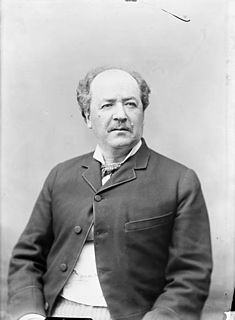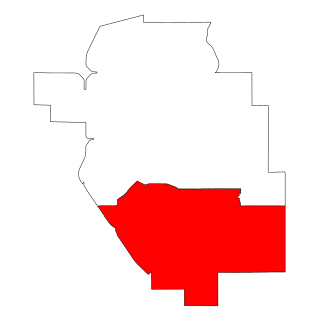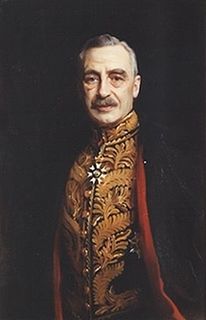| |||
22 seats in the North-West Legislative Assembly | |||
| |||
The Northwest Territories general election of 1888 was the first general election in the history of the Northwest Territories, Canada. Elections were held in various districts between 20 June and 30 June 1888. This was the only general election, where the writs were issued to return on various days.

The Northwest Territories is a federal territory of Canada. At a land area of approximately 1,144,000 km2 (442,000 sq mi) and a 2016 census population of 41,786, it is the second-largest and the most populous of the three territories in Northern Canada. Its estimated population as of 2018 is 44,445. Yellowknife became the territorial capital in 1967, following recommendations by the Carrothers Commission.

Canada is a country in the northern part of North America. Its ten provinces and three territories extend from the Atlantic to the Pacific and northward into the Arctic Ocean, covering 9.98 million square kilometres, making it the world's second-largest country by total area. Canada's southern border with the United States, stretching some 8,891 kilometres (5,525 mi), is the world's longest bi-national land border. Its capital is Ottawa, and its three largest metropolitan areas are Toronto, Montreal, and Vancouver. As a whole, Canada is sparsely populated, the majority of its land area being dominated by forest and tundra. Consequently, its population is highly urbanized, with over 80 percent of its inhabitants concentrated in large and medium-sized cities, with 70% of citizens residing within 100 kilometres (62 mi) of the southern border. Canada's climate varies widely across its vast area, ranging from arctic weather in the north, to hot summers in the southern regions, with four distinct seasons.
Contents
- Election results
- Legal Advisors
- Members of the Legislative Assembly elected
- Medicine Hat
- References
- External links
Prior to 1888, members of the 1st Council of the Northwest Territories were elected in by-elections to supplement members appointed by the Government of Canada. In order to have an elected member, a constituency needed to be set up in an area 1,000 square miles (2,600 km2) with 1000 people. Others members were appointed. This created a patch-work of represented and unrepresented areas across the sprawling and sparse territory.

The 1st Council of the North-West Territories also known as the North-West Council in Canada lasted from October 7, 1876, to 1888. It was created as a permanent replacement to the Temporary North-West Council which existed prior to 1876 and was replaced by the 1st North-West assembly when the quota of elected members was reached. The numerical denomination 1st was applied when the 2nd Council of the Northwest Territories was created to differentiate between the two councils.
By-elections, also spelled bye-elections, are used to fill elected offices that have become vacant between general elections.
The Government of Canada, officially Her Majesty's Government, is the federal administration of Canada. In Canadian English, the term can mean either the collective set of institutions or specifically the Queen-in-Council. In both senses, the current construct was established at Confederation through the Constitution Act, 1867—as a federal constitutional monarchy, wherein the Canadian Crown acts as the core, or "the most basic building block", of its Westminster-style parliamentary democracy. The Crown is thus the foundation of the executive, legislative, and judicial branches of the Canadian government. Further elements of governance are outlined in the rest of the Canadian Constitution, which includes written statutes, court rulings, and unwritten conventions developed over centuries.
Twenty-two members were elected in this election. Robert Brett was appointed government leader by Lieutenant Governor Joseph Royal. His official title was Chairman of the Lt. Governor's Advisory Council.

Robert George Brett was a politician and physician in the North-West Territories and later Alberta, Canada.

Joseph Royal was a Canadian journalist, lawyer, politician, businessman, and Lieutenant Governor of the Northwest Territories.
Three judges were appointed to the legislative assembly to provide legal advice, but they were not able to vote. They represented the territory at large.
Voters in this election cast their votes by telling the returning officer who they want to vote for. This system lasted until 1894 when a secret ballot was first used in a by-election in the Whitewood district.

The secret ballot, also known as Australian ballot, is a voting method in which a voter's choices in an election or a referendum are anonymous, forestalling attempts to influence the voter by intimidation, blackmailing, and potential vote buying. The system is one means of achieving the goal of political privacy.
Whitewood, was a territorial electoral district in the Northwest Territories of Canada from 1887 to 1905. The district was created from the former district of Broadview, prior to the 1888 general election.








